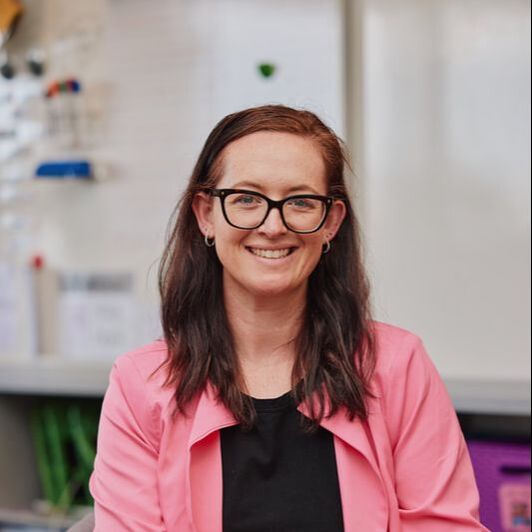I have used Daily 5 for four years now and use it as a basis for my programme. The aspects that are involved are read to self, read to someone, word work, work on writing and listen to reading. I find that all five of these are fundamental parts to practice and learn in reading time, with students building key skills while completing these. I also have a few other rotations included of other things like teacher time, work on ipad, word wall, free play, playdough, lego and crafts. These all make up important aspects of my programme. I first began with Daily 5 in 2017 - I had done the research, read the book, scoped for resources before implementing it 'the right way'. It was such a success and since then I have implemented a lot of student agency based choices which came from the daily 5 implementation.
My reading tumble is more of a choice board now where students can choose what they would like to do in reading time as long as they cross it off on their card. This is to create ownership over their choices and be held accountable for the choices they make in class too. They love being able to choose what they want to do and I love seeing them do it!
I hope this has helped unpack a little on how reading is run in my classroom. Obviously things might be different this year with my newbies but I know I will be doing Daily 5 again in a basic tumble to begin the year. If you have any questions about how I run reading please get in contact [email protected] or send me a message over facebook or instagram.
7 Comments
Whānau, family members and parents are an important part of the classroom - just like your students. All parents want the best for their little kiddies (even though it might not come across that way sometimes). When starting your year, there are some important things you should think about and plan to start your year. Schools might have particular expectations that you can work with like how to communicate with parents (on an app, in person, set times) and for things like parent teacher conferences. Setting up (in your mind) what you want to achieve over the year will help it be a success.
A big thing for me with families is facebook and personal messaging. I absolutely REFUSE to add any parents as friends on facebook; give out my personal cellphone number and have conversations at absurd hours of the night. That is something that I have always stuck with since I began teaching, and feel that my facebook page is my personal life - the small part I have seperate from school. I worked at a school that lived their entire school community on facebook. It was INSANE trying to stop parents messaging me on facebook, ignoring friend requests and even facebook calling! It was just something I can not do and won't change for a job. If there is something you are firm about, then stick to your guns, be true to what you believe in and be consistent. Parents soon learnt to contact me via email or come in and visit me. Also accepting phone calls or emails at 10.30pm at night is a NO go. I will respond at resonnable times of the day. Check out my top tips to get set up with parents! Want to learn more about Seesaw? Check out all of my Seesaw blog posts, resources and how to get set up if you are looking for an amazing way to communicate with parents and whānau.
Some of my resources pictured above are available for download! The 'meet the teacher' resource can be downloaded via the 'Mrs P's Teacher Hub link'. I made up the learning story template on Google drawings which involves text boxes and layering - super simple to make! Download my happy grams template freebie on this post! As always, if you need any help or have any questions email me [email protected]
My main advice with writing ( and any other main curriculum area) is to first see what your school uses. Check in with your mentor teacher or other teachers around; ask what they do, how they teach, what resources and then create a plan. You might do whole class writing all the time; goal based writing; experience based or provocation writing; theme or genre based writing; fun writing and more! There are so many ways you can run your writing programme and it all goes back to your students and what they want. Again like maths, you can have other things set up to support your writing programme like games or activities, modelling books, appropriate word games or vocabulary, goals and progressions and more.
I start writing with the genre or theme we are working on. I make it explicit with anchor charts, examples, modelling and lots of engagement with hands on applications of the learning. For each session, it will start with a hook or exciting provocation to get them into the writing. Usually a piece of writing will be crafted over two-three days and not just one day. It will be broken up into sections so it can be drafted, edited and published. Of course with littles this can take awhile, hence it taking a few days to accomplish what you need. A prime example is narrative writing. You can't just say cool go write your own story now. Students need time to plan their characters, setting, problem and solution before even writing what they want to happen. Each session I remind them of the theme or genre, we talk about what we did the day before and then launch into the hook. We usually have some form of whole class brainstorm, discussion or learning journey that will take us to the actual learning point we are specifically writing about. There is lots of language building, brainstorming, think/peer/share and more.
After this, they come back to the mat for specific writing modelling that is based on the learning for today. So for example in the picture below, it was the actual writing that took place then using key words, vocabulary and sentence structures that we have been working on, are displayed or are important to the learning. In this time, I will also share the differentiated learning too so students can use this to help their learning; and aim for an appropriate level in their writing. Sometimes it will be in lots of detail (if the learning is something new) or very generic like the below picture where I am simply saying they need to talk about 'what and when' for 2 stars in writing. There would be lots of scaffolding and shared language happening in this process too - so students have as much knowledge as possible when writing. After that, they then go off for either independent writing, writing with the teacher or writing with the teacher assistant. I send groups off based on their goals they are working on and have same goal students working in groups together. Independent writers are able to use the activeboard and sentence structures for help plus sound cards, word cards and anything else they might need. I will aim to work with two groups in writing time but this really depends on time. If I can, I put similar groups together and target both of those goals at once in the guided writing. I then conference with the an independent writing group at the end once they have finished writing and are ready to have it seen by the teacher. I use things like editing eyes once finished and peer checks also. In the teacher conference time I will check their goals in their work and slo their progressions to see how they are working. A lot to pack in a session, but once it is going, it is really smooth flowing and students know the routines and what is expected of them. Now that probably does not explain hugely EXACTLY what I do, but it really is hard to write down what I do explicitly in a blog post. Once my classroom is set up, I will do a video explaining it in detail, plus how I run my guided writing programme too.
I love teaching writing my students make amazing progress over the year. Its changed and varied a lot of the year but that is to help meet the needs of my students. What I do is for a purpose and explaining it in this blog post has actually helped me confirm my reasons for why I do what I do and how positive I can see it being with my students. If you have any questions please email [email protected] and I will get back to you about those!  I consider modelling books to be one of the most important things to use to assist my teaching in guided teaching time. Modelling books (if used correctly) can be an amazing way to enhance, help and extend learning than simply explaining something. I know many beginning teachers are like whhhaaatttt? Because this came up seven times in the suggestion box for next blog posts. Someone even asked "do they have to use them?". Of course you don't. Each school and teacher is different. You will have ways that work for you and ways that don't. For me, modelling books are part of my teaching and something I find hugely beneficial for my students. When I first started teaching in 2012, I was at school that had a HUGE list of non-negotiables with modelling books. They have to have a whole list of things in them, and were basically a teacher driven book - the students got nothing out of them. After moving on from that school I was able to fine tune the way I wanted to use them, see their true potential with my students and repurpose them (in my mind) for how they truely should be.
These will affect how you use them and the value they hold with you as a teacher. Now as I have said, I find and hold modelling books to be an important part of my teaching. That is because I use them explicitly in my guided teaching sessions. They hold the learning intentions students are working on, have formative and/or summative assessment gathering with the learning we are completing in the sessions and the content of the learning to support my direct teaching. I have my modelling books open constantly and use these in the beginning, middle and end of the teaching sessions. Like I said, modelling books are not compulsory and something you MUST have. You might not have even heard about modelling books until today. But if you have used them before, I wonder if they hold the same value to you as they do to me?
When I am back into my classroom and are set up, I want to create a video explaining my modelling books further so I can share exactly how I set them up and answer any questions you might have. Until then, if you have any question please email me [email protected].
More recently, there has been a lot of work about UDL - universal design for learning. This is where you can specifically design lessons or learning outcomes to suit all the needs in your class rather than just the major chunks or spread. There is lots of research, ideas, resources and more online about UDL so if you are looking for specifics start here.
In 2020, I had a large class spread covering Year 0-3 students. I needed to differentiate the learning significantly as I had students working in Early Level One of the NZ Curriculum to Level Two. So extreme and not as easy to cover in whole class opportunities. I incorporated a three level success criteria or level system into my classroom for whole class learning opportunities covering three key or main areas of students in my class. It allowed students to work at a goal or level they can achieve, or also push themselves to attempt learning at a higher level. This was made part of my classroom practice and students know exactly what it means when completing their learning. The main area I found I needed to differentiate for was writing, word work and maths hot spots. Those were the main three I began with and used for two terms solidly. Have more questions about differentiation? Email me [email protected] or check out my website for more resources, ideas and freebies! Number of the week display chart - differentiation
NZ$1.00
Number of the week display chart - differentiation This template is great for different levels of students in your classroom that could be working on a variety of numbers for your week. I use this alongside my number of the week templates with this chart being on the wall for students to know what number to work on or choose. There are 4 templates in this pack:
There are 5 resources in this pack. Print off the template you want to use, laminate it to ensure durability and display it for students to be able to see what the number of the week is. Writing Vocabulary Mats (differentiated and plain)
NZ$6.00
Writing Vocabulary Mats (differentiated and plain) These vocabulary mats are a great addition to your classroom. Each vocabulary mat has both a differentiated and plain version. The differentiation provides three different sentence starters for students to choose to help scaffold their writing; or use their own sentence starters to form their ideas. This writing vocabulary mat pack comes with:
Vocabulary mats include these in both differentiated and plain (with sentence starters and without):
This includes 101 pages in the resource. Maths is such a fun curriculum area to teach! I love everything about Maths - the way students share their learning and thinking, the manipulatives that can be used to explore their findings and the variety of programmes or Maths ideas that are out there to be used in your Maths programme. To start with, checking in with your fellow teachers at school on the programmes or notions they use in school. This could be things like Numicon, PR1ME or others in guided Maths teaching time. You might like to run your programme in a tumble based with activities to complete to support guided teaching time with you.
So I created a Maths acronym and concept based on each of those called PRISM. I use it in a tumble based programme to begin after unpacking each aspect slowly with practice opportunities. Each anchor chart is on the wall to refer back to if students are unsure or need ideas for each part. After practice and time, I then include 'you pick' where I give students the choice of what they want to do from the choices. I include other play aspects like lego table and play area so students can also do that if you they want to. I loved building student agency and giving my students the option to choose what they would like to do. The above picture explains how I teach Maths in my classroom. This is something I have practiced and fine tuned and I find works for ME in guided Maths teaching. This covers what we do when students come to the teacher table when teaching a strategy. I love this type of teaching as it gives me opportunities to differentiate based on students needs and target the next learning steps. Maths is lots of fun and I love seeing the growth of students in the learning and activities. There are lots of different ways to teach and cover Maths so do what works for you and your students. Check out some of the many Maths resources I have on my website including my PRISM Maths concept covering everything you need to implement this concept in your classroom too. Prism Maths Concept
NZ$8.00
PRISM Maths Concept This Maths concept is the perfect way to pull a range of activities and ideas within Maths time. It allows for a variation of activities in class time to ensure students are receiving a range of things. PRISM stands for: P - Practise by myself R - Ready with a buddy I - I can use technology S - Solve in book M - Manipulative exploration This resource comes with: -premade pages that show what students can do when on each aspect -blank templates for you to add to make your own PRISM wall display -anchor charts for unpacking each aspect of PRISM -PRISM icons for your tumble board -PRISM wall display areas for your classroom This resource also comes with some additional worksheets and activities that I have integrated into this PRISM Maths Concept. -problem solving thinking frames -number of the week chart -various games that can be used for practice by myself or ready with a buddy There are 80 pages in this resource. *Recently updated on 6/11/21. If you have already purchased and want the updated version please send me an email: [email protected] PRISM maths planner on Google Sheets
NZ$4.00
PRISM maths planner on Google Sheets This planner is to go alongside my PRISM maths concept resource. With drop down boxes and matching pictures, this is ideal in streamlining and making planning easier. Each drop down box automatically changes the picture for you, and is colour coded with the theme of the PRISM colours. This resource will be a pdf document, with the Google sheets planner template accessible via link. This will then make a copy for you in your Google drive. **This is not a customisable template, with no assistance given if pictures/formula is tampered with, ending with the resource not running smoothly. Please think carefully about this before purchasing the resource. Want more information about PRISM? Check out the resource here. Want to see more of this resource? Watch this quick explanation video here. Maths reflection prompts
NZ$0.00
Maths reflection prompts If you are looking for some thinking or scaffolding prompts when talking about maths then these are perfect for you! This resource comes with a title header and 8 sentence starter prompts to help your students talk about their maths learning. Great for group work, individual sharing or for on your wall as a display! Maths Problem Solving mats (materials)
NZ$2.50
Maths Problem Solving Mats (materials) These problem solving mats are a great addition to guided maths sessions where students are learning addition or subtraction concepts. These problem solving mats can be used to create learning stories to support addition or subtraction learning with students manipulating the items to solve the questions. These mats include: Mat 1: Leaf and ladybugs Mat 2: Plate and hotdogs Mat 3: Bus and children Mat 4: Puppy and bone Mat 5: Monkey and banana Mat 6: Farmer and sheep Mat 7: Barn and cows Mat 8: Baking tray and donuts/cupcakes Mat 9: Basket and carrots Mat 10: Truck and cones
Depending on the day and timings, I usually do most of these above ideas with my students on the first day. I definitley try and do a little bit of writing or art, routine teaching for a few routines, getting to know each other games or activities and a school walk or tour. With the newbies beginning, this shows them where things are, where to navigate around the school and I always make it fun by turning it into an Eye Spy game. That way students are looking for specific things on our walk - make it fun! My personal recommendation is NOT to complete anything intense like reading groups, maths groups, structured writing etc so students can breathe easy and have some fun on the first day. I don't use their books on the first day nor do any 'teaching' on the first day. I keep it light, fun and easy going! But then again, each to their own so please do what is best for you and your students.
First Day Questions
NZ$0.00
First day of school questions These questions are great prompts and questions to use to get to know your students on the first day of school. Print them off, display them around your class and use these to get to know your students. Each letter of the word 'first day' has a question which could be used in whole class questions, small groups, entry/exit questions. Back to School Favourite Things
NZ$0.00
Back to School Favourite Things This is a great template for students to write or draw their favourite things. This could be used as a writing activity on the first day or over the first week. This comes in black and white and also colour variation. Beginning of the year anchor charts
NZ$3.00
First day of school anchor charts These anchor charts are perfect for setting the scene on the first day of school. They each have different questions that students can answer with sticky dots or post it notes! A great way to gain student ideas, to get a feel for how they are feeling and form connections at the beginning of the year. The anchor charts included are: -how do you feel about year... -how you like to work best? -what is your favourite subject? -what is 1 thing you want to learn this year? -what is 1 thing you want your teacher to know about you? -what do you think makes a great teacher? -what did you like the most about year ..... (last year)? Tell me about you! game
NZ$0.00
Tell me about you! game This game is a great game that you can can play with your students at the beginning of the year. This is perfect for the first day of school or even the first week of school. Students can play in groups of 2-4, taking turns to answer the questions to share information about themselves. The #1 thing I take pride in and place value on in my classroom is routines. Especially with junior students, the class can make or break without strong routines in place. They aren't built in one day; but with time, practice and commitment, you can have strong routines for your classroom. Why are routines important? Well firstly, students know where things go, how they should be, what comes first or second etc, what will follow on. This helps lessen any anxiety students and teachers might have, build clear expectations on what is expected of them and creates a high functioning classroom. On the first day of school, I always spend it building relationships, touching on surface level routines like how we sit on the mat, where our personal belongings go (in our bags) and using a small selection of classroom belongings. Before setting students off to complete it, use it or play with it I always talk through the expectations and model how it should go. This could be physically showing them, using another child to model or role play and being consistent about what is happening while students are completing the action. If students are needing reminding, I will pause and gain all their attention to talk about next steps or recap the routine we are practicing. Lots and lots of positive praise helps to - nothing like dojo points for listening first time! Over time, these routines become easier and easier (as does anything) It can be a bit daunting with how many routines you need to practice! I would work on covering the same few everyday until they are independently showing them without reminders. Then add a few more each week until they have sufficient practice and are confident! The above five examples are some you could start with in your first few weeks of school. A helpful hint - especially if you have junior students; is to make visuals to help with routines. Where things go, how things should be and reminders of expectations to support the routines. Making things part of your routines will help students (and you) in the long run. The above pictures are my favourites - especially the Bitmoji prompts! Anything can be made into a routine, it just takes practice and repetition.
If you have any questions about any of the classroom routines I have please contact me [email protected]. Just remember to take the time they need to be implemented successfully and if your classroom seems on edge, 9 times out of 10 its a routine that isn't being held up! This one came up a lot in requests. How do you know how to deal with behaviour? How do you know what to do? Who will help you? What happens if.... Well I can tell you one thing - with behaviour ALL schools have a plan is place to support you. There is not a school I have worked at that does not have clear expectations, guidelines and procedures to follow when dealing or responding with behaviour. If you are a teacher and you aren't a parent, some behaviours will be mind blowing. You will be so confused, upset, stressed and even anxious about students when they are with you. And it is ok!! I don't even get behaviour right all the time. My first piece of advice is to read through those policies, expectations and procedures from your school. Talk to your mentor teacher or the teacher in charge of behaviour (this could be a PB4L leader or something similar in your setting). Ask all the questions you need to and be clear in the process. Have the documents available if you need them. But remember to be CONSISTENT.
My second piece of advice is to have some things in place or in mind in your classroom to help cater for these with students. If it is sensory related, having a space where students can go to achieve the sensory buzz they are missing. If it is attention seeking ensuring positive praise is happening - remember 5:1 of positives for one negative. If it is an activity, is there something you could put in place so they get a turn either in a tumble or as a reward? If they don't want to do something - why don't they? Is it motivation? Knowledge? Anxiety? Working with your students to put a plan in place to assist with these things will help the student and you. Usually, schools might set up a behaviour plan to help monitor and work with the families so there is a triangle of support in place.
Remember that students don't do the behaviour because they hate you, or are angry at you, or want you to have a stink day. There is always a reason behind it. Your school will support you in this journey which is not always rainbows and butterflies! If you have any further questions, please contact me [email protected] or contact your support person at your school.
|
AuthorMrs Priestley ICT blog is a place to read, download and view ideas! Archives
February 2024
Categories
All
|

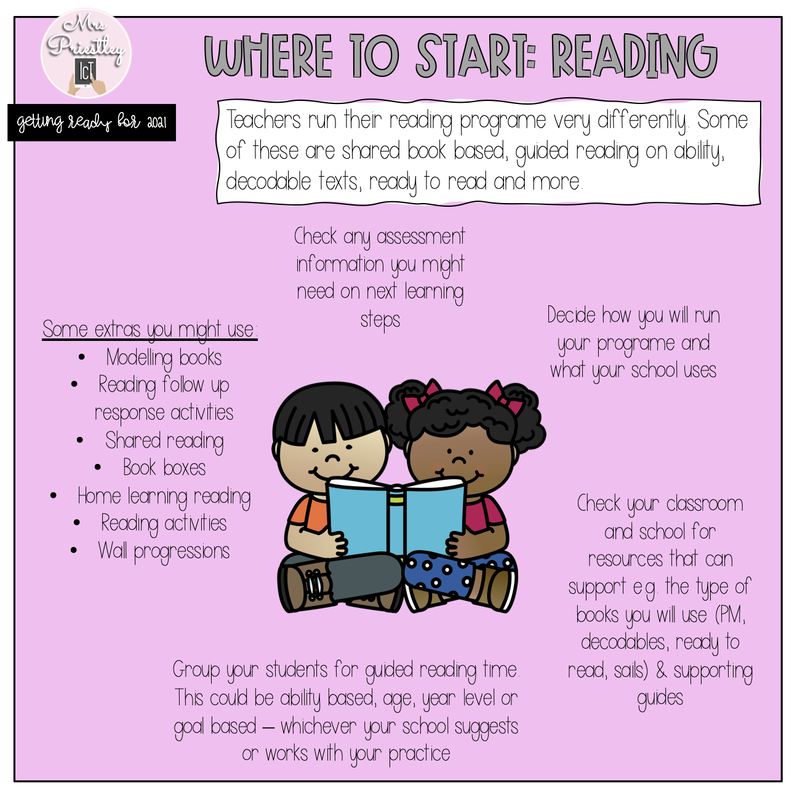








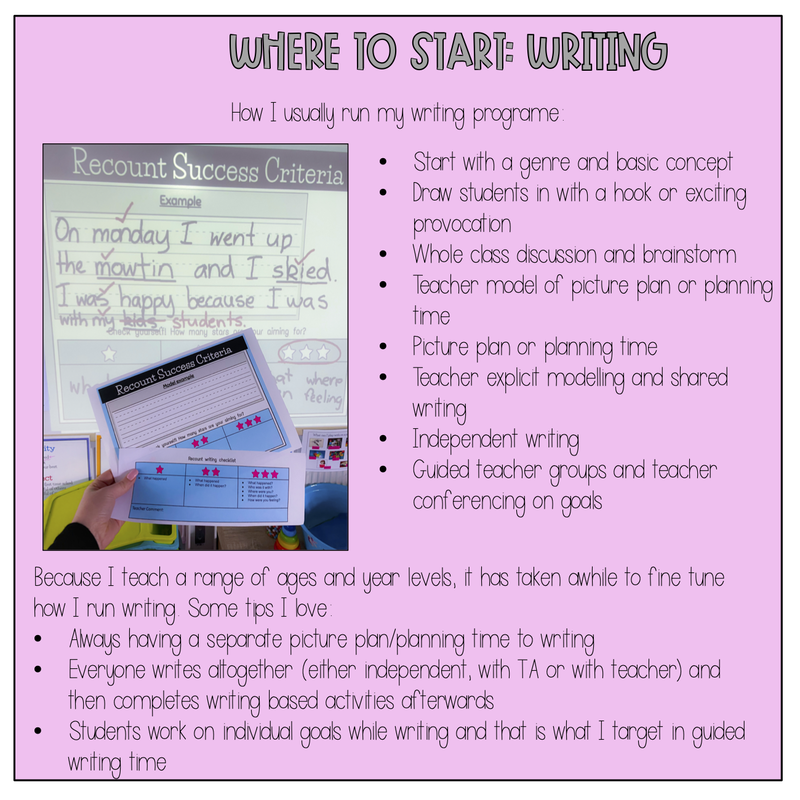

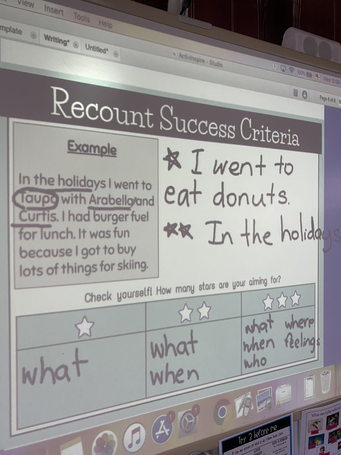
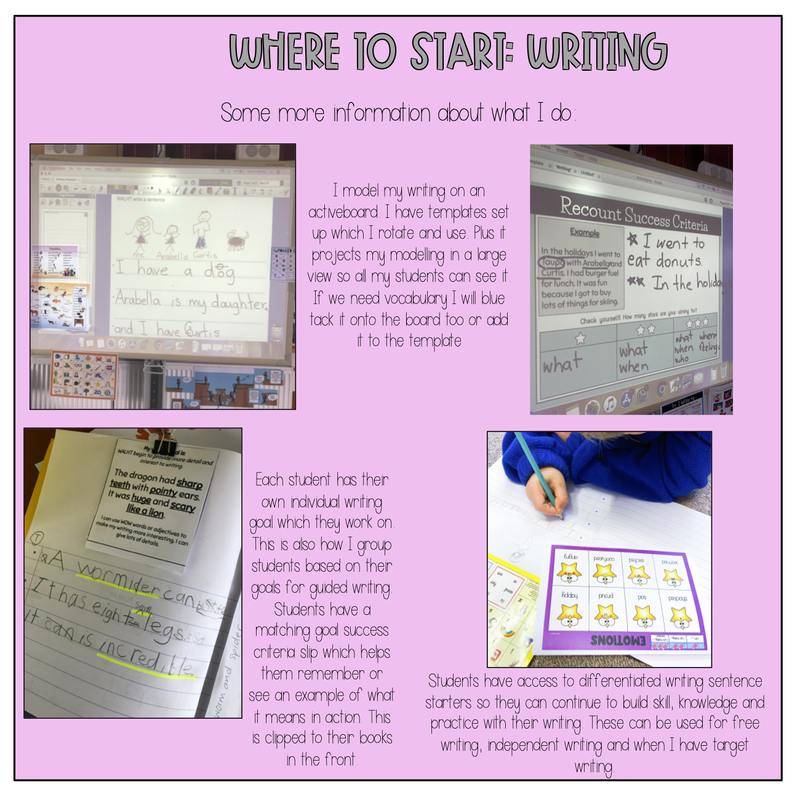

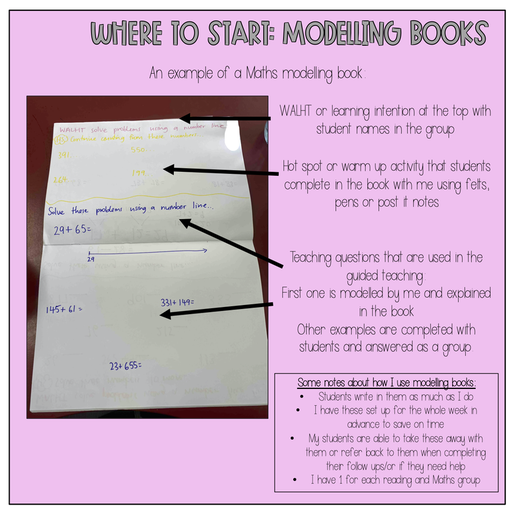




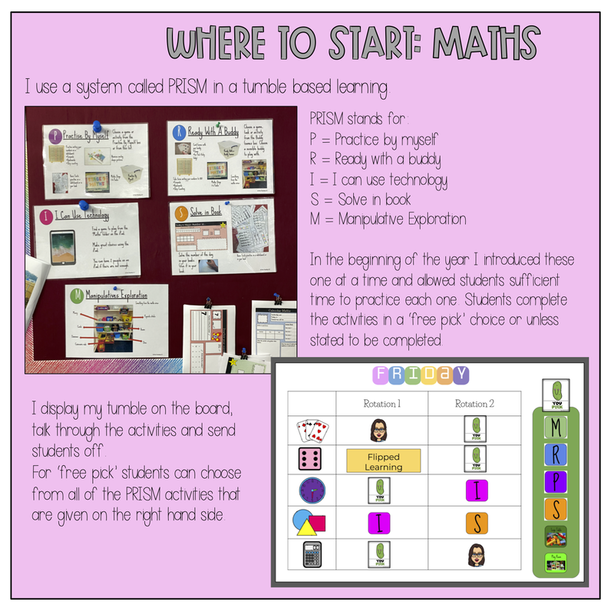












 RSS Feed
RSS Feed
